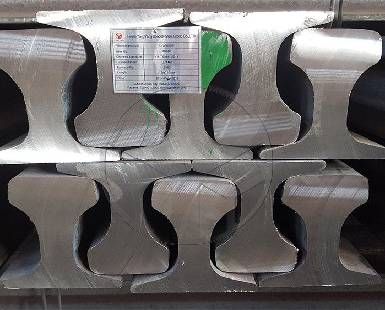Home >> News >> Latest News
Machine tool manufacturers are doing their best to ensure the accuracy of Guide Rail installation. Before the guide rail is processed, the guide rail and working parts have been aging treatment to eliminate internal stress. In order to ensure the accuracy of the guide rail and prolong the service life, scraping is a common process method.
The new guide rail system enables the machine tool to obtain rapid feed speed. In the case of the same spindle speed, rapid feed is a characteristic of linear guides. Linear guides, like flat guides, have two basic elements; one as a guide is a fixed element, and the other is a moving element. In order to ensure the accuracy of the machine tool, a small amount of scraping of the bed or column is essential. Generally, the installation is relatively simple.
There is no intermediate medium between the moving element and the fixed element of the linear guide, but a rolling steel ball. Because the rolling steel ball is suitable for high-speed movement, has a small friction coefficient and high sensitivity, it can meet the working requirements of moving parts, such as the tool rest and carriage of machine tools.
If the working time is too long, the steel ball begins to wear, and the preload on the steel ball begins to weaken, resulting in a decrease in the movement accuracy of the working parts of the machine tool. If you want to maintain the initial accuracy, you must replace the rail bracket or even the rail. Tihao Machinery is the company's main products with rotary center, screw, machine tool spindle, shaft processing, high-precision tool holder, tool holder, elastic chuck, non-standard parts processing, and machine tool extension! If the rail system has a preload effect. The accuracy of the system has been lost, and the only way is to replace the rolling elements.

Guide Rail
The linear roller Guide Rail System is a combination of a flat guide rail and a linear roller guide rail. Rollers are installed on parallel guide rails, and rollers replace steel balls to carry the moving parts of the machine tool. The advantages are large contact area, large load carrying capacity and high sensitivity. Viewed from the bottom of the bed, the bracket and rollers are placed on the top and side surfaces of the plane guide rail. In order to obtain high precision, a wedge is set between the working parts of the machine tool and the inner surface of the bracket to make the preload act on the side of the bracket.
The working principle of the wedge plate is similar to that of the inclined iron, and the weight of the working part acts on the top surface of the bracket. Because the preload acting on the guide rail system is adjustable, the loss of the wedge plate is compensated for. This feature is widely used in medium or large machine tools because it is sensitive to CNC commands, bears large loads, and is linear. The roller guide system can withstand high-speed operation than traditional flat guides and improve the performance of the machine tool.
The most commonly used form of guide rail on machine tools is inlaid steel guide rail, which has a long history of use. The inlaid steel rail is the fixed element of the rail system, and its cross section is rectangular. It can be installed horizontally on the bed of the machine tool, or cast into a whole with the bed, which are called steel-inlaid or integral. The steel-inlaid guide rail is made of steel, hardened and ground. The hardness is above 60 degrees Rockwell hardness, and the steel-inlaid guide rail is attached to the machine bed or the mating surface of the scraped column with screws or adhesive (epoxy resin) to ensure the best flatness of the guide rail. This form is convenient and simple for maintenance and replacement, and is very popular with maintenance workers.
The development of traditional Rails is first manifested in the form of sliding elements and guide rails. The characteristic of sliding guide rails is the use of media between the guide rails and sliding parts. The difference in form lies in the choice of different media.
Hydraulics are widely used in many rail systems. Hydrostatic guide rail is one of them. Under pressure, hydraulic oil enters the groove of the sliding element, forming an oil film between the guide rail and the sliding element, separating the guide rail and the moving element, which greatly reduces the friction of the moving element. The hydrostatic guide rail is extremely effective for large loads and has a compensation effect on eccentric loads. Taihao Machinery is the company's main products with rotary center, screw, machine tool spindle, shaft processing, high-precision tool holder, tool holder, elastic chuck, non-standard parts processing, and machine tool extension! For example, when a large sand box is being processed, it just goes to the end of the stroke of the machine tool. The load rail can increase the oil pressure, so that the rail can accurately maintain the level of the load. Some horizontal boring and milling machines use this technique to compensate for the decrease in spindle speed during deep hole machining.
Another type of guide rail that uses oil as a medium is a dynamic pressure guide. The difference between a dynamic pressure guide and a static pressure guide is that oil does not work under pressure. It uses the viscosity of oil to avoid the movement between the moving element and the guide. Direct contact has the advantage of saving hydraulic oil pumps.
Air can also be used for the medium between the moving element and the guide rail. It also has two forms, pneumatic static pressure guide rail and pneumatic dynamic pressure guide rail. The working principle is the same as that of hydraulic guide rail.
Previous: Light Rail VS Heavy Rail

Leave a message